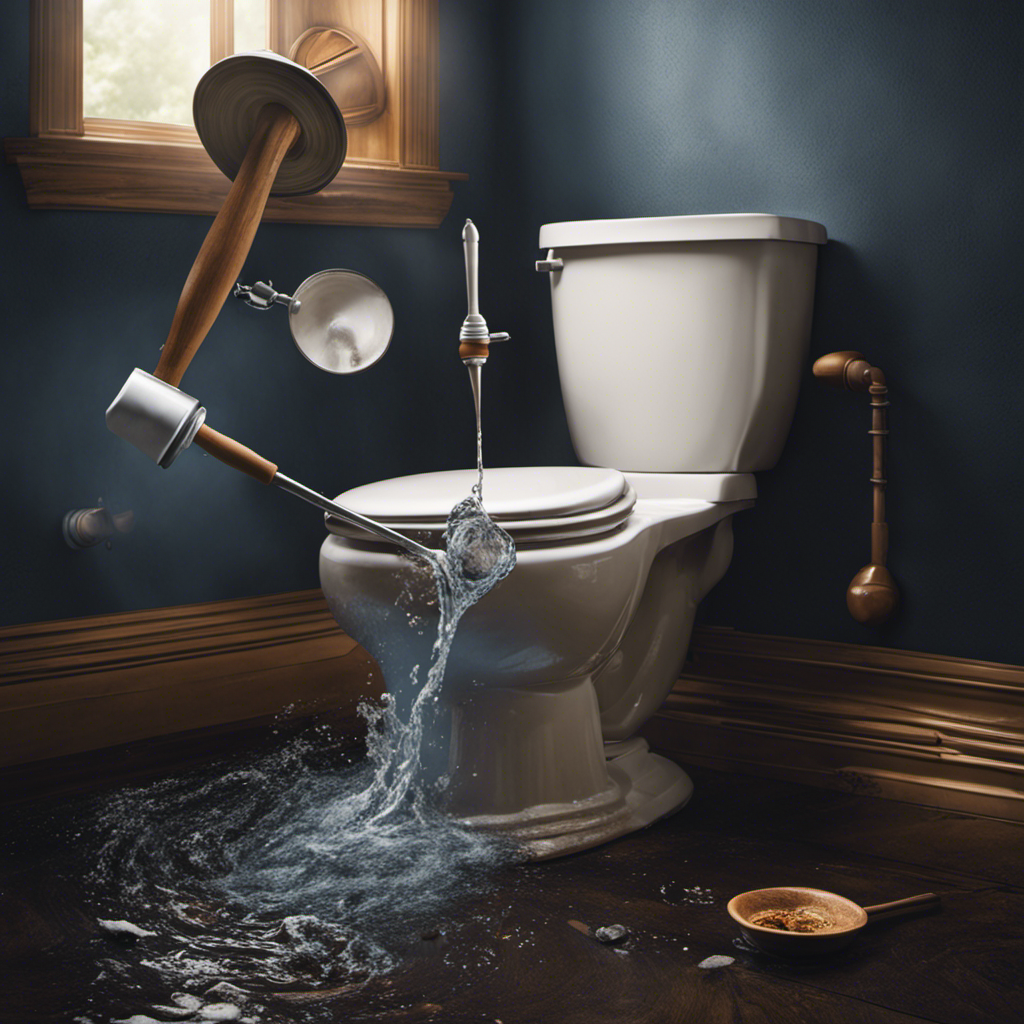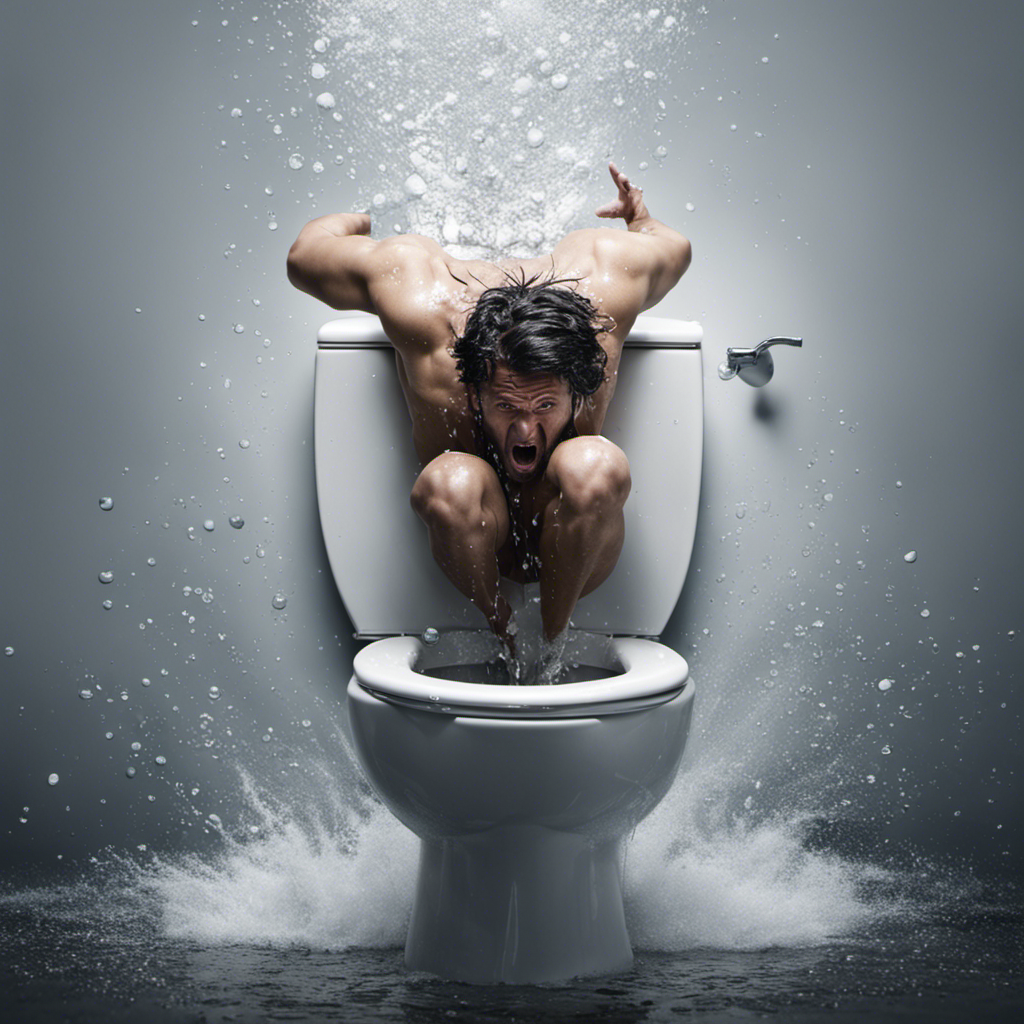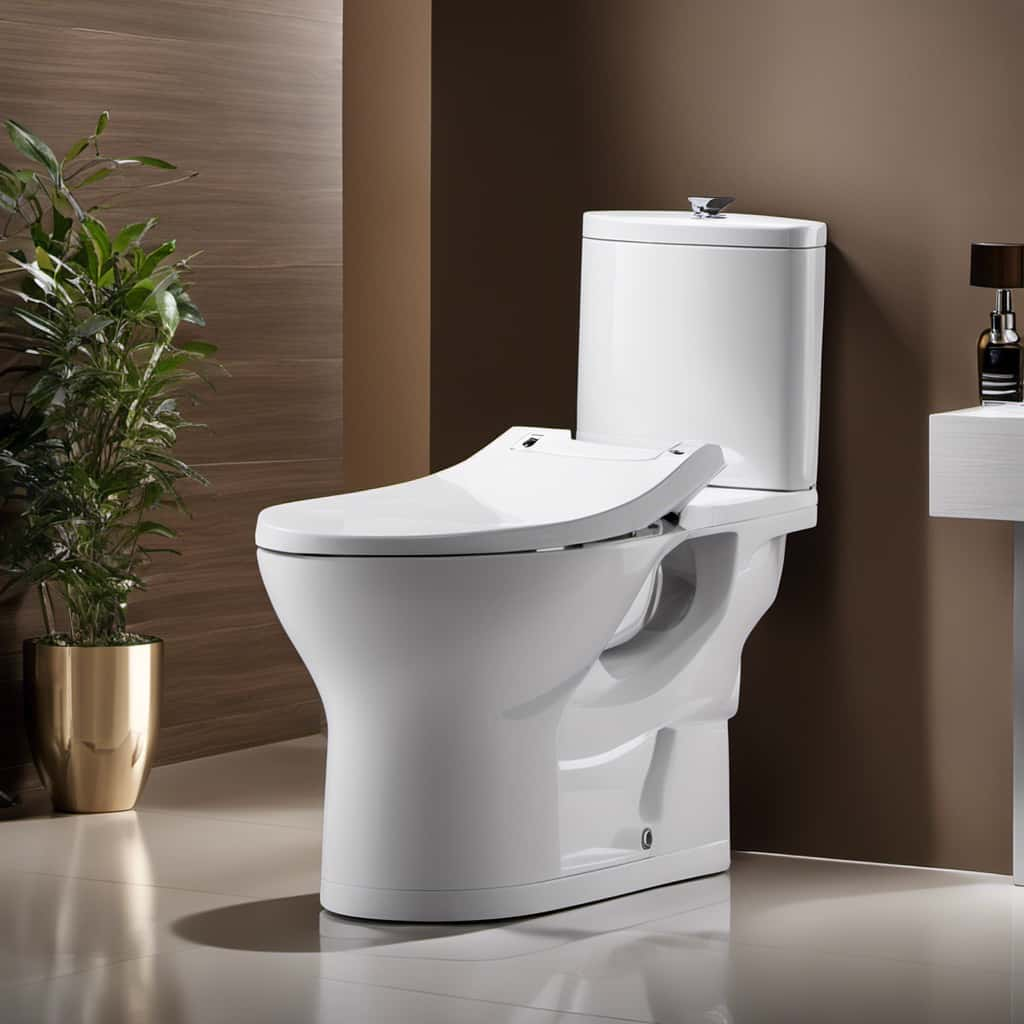So, you find yourself facing a clogged toilet. Quite the unexpected surprise, isn’t it? Well, fear not, my fellow bathroom warriors, for I am here to guide you through the art of plunging.
In this article, I will share with you the secrets of successfully unclogging a toilet. From the types of plungers to the step-by-step process, we’ll cover it all.
So, grab your plunger and let’s dive into the world of toilet plunging!
Key Takeaways
- Understanding the two main types of plungers: cup plunger and flange plunger
- Gathering necessary tools for plunging: toilet plunger and bucket of hot water
- Following a step-by-step guide to plunging a toilet
- Troubleshooting common plunging issues and seeking professional help if needed
Understanding the Plunger: Types and Usage
To unclog your toilet, you’ll want to use a plunger. Plungers are an essential tool for dealing with common toilet clogs.
There are two main types of plungers: the cup plunger and the flange plunger. The cup plunger is best for sinks and showers, while the flange plunger is designed specifically for toilets.
When using a plunger, it’s important to maintain it properly. Rinse it thoroughly after each use and store it in a clean, dry place.
Additionally, there are alternative methods to plunging that you can try if the plunger doesn’t work. These include using a toilet auger or a chemical drain cleaner. However, it’s important to exercise caution and follow the instructions carefully to avoid damaging your toilet or causing harm to yourself.
Now that you understand the importance of a plunger and its maintenance, let’s move on to preparing for the plunge by gathering the necessary tools.
Preparing for the Plunge: Gathering Necessary Tools
First, make sure you have all the necessary tools ready for the job. To effectively plunge a toilet, you will need a toilet plunger and a bucket of hot water. The plunger is the key tool for unclogging the toilet, while the hot water helps to soften any stubborn blockages. It is important to have these tools readily available before starting the plunging process.
| Toilet Plunger | Bucket of Hot Water |
|---|---|
| Used to create pressure and suction | Helps to soften blockages |
| Has a rubber cup on one end | Should be filled with hot water |
| Creates a seal around the drain opening | Pour slowly into the toilet bowl |
Having these tools on hand will ensure that you are prepared to tackle any toilet clog effectively. Remember, prevention is always better than cure, so it is important to practice good toilet clog prevention habits to avoid future issues.
Step-by-Step Guide to Plunging a Toilet
Now that you have gathered all the necessary tools, it’s time to begin the step-by-step guide to unclogging your toilet.
-
Position the plunger: Place the rubber suction cup of the plunger directly over the drain hole in the toilet bowl. Make sure it forms a tight seal.
-
Apply pressure: Use your hands to hold the plunger handle firmly and push down forcefully. This will create suction and dislodge the clog. After a few vigorous plunges, release the handle and allow the water to flow.
-
Repeat if necessary: If the toilet is still clogged, repeat the plunging process. Be patient and persistent, as it may take several attempts to completely clear the blockage.
Troubleshooting Common Plunging Issues
If the water is not flowing after several forceful plunges, try adjusting the position of the plunger to ensure a tight seal. Sometimes, the plunger may not be creating enough suction to dislodge the clog. By repositioning it and creating a better seal, you can increase the effectiveness of your plunging efforts.
When it comes to common plunger techniques, it’s important to remember to use short, quick plunges rather than long, slow ones. This helps to create a strong suction and dislodge the clog more effectively. Additionally, make sure to use a plunger specifically designed for toilets, as it has a flange that creates a better seal.
However, if you find that you’re consistently experiencing toilet clogs, it may be a sign of a more serious plumbing issue. This could include problems with the sewer line or a blockage further down the pipe. In these cases, it’s best to consult a professional plumber to diagnose and resolve the issue.
Tips for Preventing Toilet Clogs in the Future
To prevent future toilet clogs, it’s important to be mindful of what you flush down the drain. Here are three key tips for preventing toilet clogs and maintaining a healthy plumbing system:
-
Use only toilet-friendly materials: Avoid flushing anything other than toilet paper and human waste. Items like wet wipes, feminine hygiene products, and paper towels can easily cause clogs and damage to your pipes.
-
Regularly clean your toilet: Build-up of minerals, debris, and bacteria can contribute to clogs. Clean your toilet bowl regularly with a toilet brush and use a mild cleaner to keep it free from any residue.
-
Install a drain strainer: Placing a drain strainer over your toilet drain can catch hair, small objects, and other debris, preventing them from entering the pipes and causing clogs.
Conclusion
In conclusion, plunging a toilet is a simple yet essential task that anyone can master. By understanding the different types of plungers and gathering the necessary tools, you can tackle toilet clogs with confidence.
Following a step-by-step guide, you can effectively plunge a toilet and troubleshoot any common issues that may arise. By implementing preventive measures, such as proper waste disposal and regular maintenance, you can minimize the occurrence of toilet clogs in the future.
Remember, with a little knowledge and the right tools, you can easily handle any toilet clog that comes your way.










